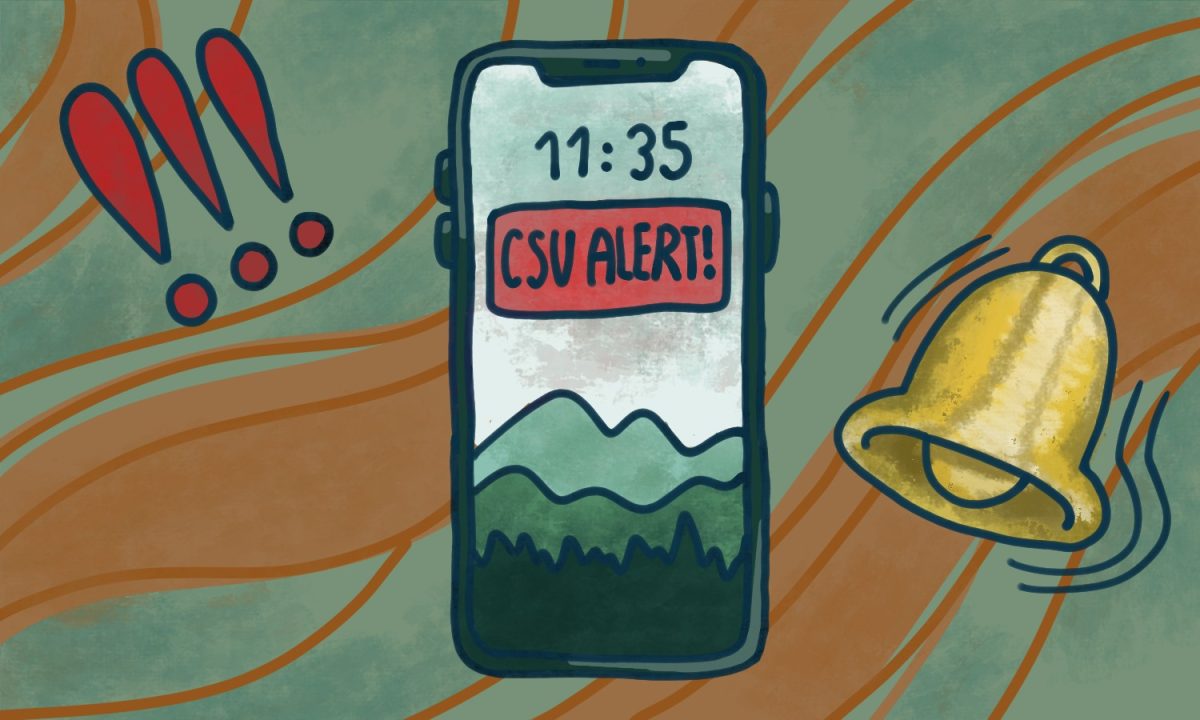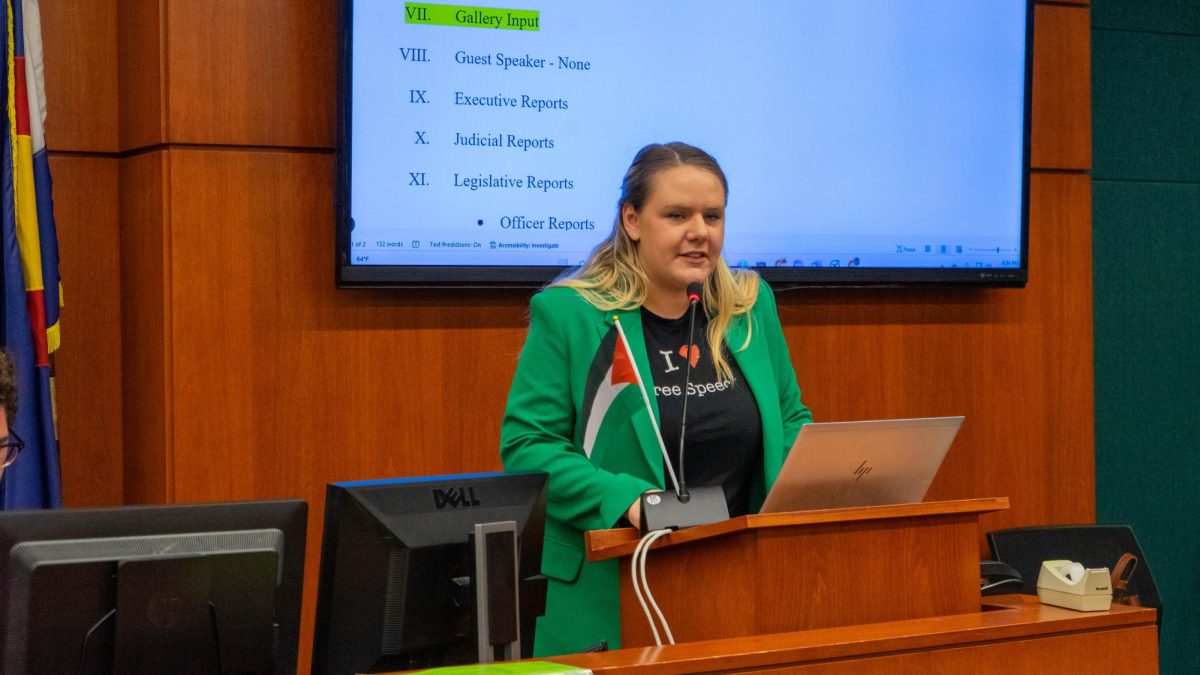Between Oct. 16 and Oct. 22, five safety alerts were sent to the Colorado State University campus community.
Within seven days, alerts for a student death, an aggravated assault and three altercations placed swaths of campus under shelter-in-place orders and warnings to avoid certain areas.
CSU uses an email and text system to alert the campus to incidents. CSU works with Everbridge, a mass notification system supported by the Larimer Emergency Telephone Authority. Nik Olsen, CSU’s director of crisis communications and public information officer, said anyone with a colostate.edu email address is attached to the Everbridge alert system.
Olsen said anyone with an organization-specific email address is given the option to opt into additional text notifications, and about 30,000 people are signed up for the text messages, which are a relatively new system for CSU.
“That’s why we’re assuming more people are getting text messages than there were before,” Olsen said.
In addition to the emergency notifications, CSU is required by law to issue timely warnings for any imminent danger — which fall under a different legal designation. The Clery Act, a federal law that mandates public colleges and universities report on-campus crime data, applies to the timely notifications CSU sends out.
Olsen said emergency alerts are threats to safety as well as natural disasters, severe weather alerts, infrastructure failures and evacuation notices. Timely warnings required by the Clery Act are any crimes, including criminal homicide, sex offenses, aggravated assault, robbery, burglary, arson and motor vehicle theft. The Clery Act requires email notifications are sent to the campus community.
“If we were to resolve an issue before we had a chance to send the clarity notification out, … we wouldn’t have to send anything out because it’d be resolved,” Olsen said. “So our general axiom is maximum disclosure with minimal delay. Now, there are times that sharing, like, details of the investigation would actually impede the investigation and make it much harder to bring justice to the situation, so we couldn’t — we can’t just share information.”
Olsen said the CSU Police Department has the authority to issue an emergency alert, often by someone in dispatch. From there, Olsen and the crisis communication team will work to get as much information shared as possible while keeping campus safety in mind.
“I’ve been at CSU for a long, long time, and I don’t remember … different incidents kind of stacking up like the way they did in October.” -Nik Olsen, CSU director of crisis communications
“We’re able to get our message out more quickly through this new text message system,” Olsen said. “So people are knowing more about (incidents). I don’t know that we’re up or down anything on our calls this year. … I think we’re probably about static. It’s just kind of manifesting a little bit differently this year.”
Olsen, who spoke with a police captain, said the influx of reported incidents might be due to people being more likely to call the police in the moment when they see something going on.
“I’ve been at CSU for a long, long time, and I don’t remember … different incidents kind of stacking up like the way they did in October,” Olsen said.
The Collegian conducted an Instagram poll Oct. 27 asking students if they feel safe on CSU’s campus. One hundred and one students voted yes, and 59 students voted no — 63% yes and 37% no.
In a second poll asking if students’ perceptions of safety changed this semester, 136 students voted yes, and 43 students voted no — 76% yes and 24% no.
The Collegian also asked how students they feel safety is handled by CSU.
“I feel like CSU values their reputation more than informing their students of what is happening,” Annelise Dusterberg said over Instagram.
Students also voiced concern that alerts do not include areas immediately off-campus. With many students living in areas bordering campus, proximity to an incident can be a concern.
“CSU Police does not consider the safety of those living off of but close to campus,” Annika Davis responded.
Students expressed displeasure with the lack of follow-up notifications and information following incidents.
“It really fosters a distrust for the PD than anything,” Emma Simpkins said over Instagram. “Sending out a hold order with little/no information makes almost everyone feel uneasy, especially those who live on campus. Instead of being ominous, they should give at least a little information while maintaining privacy, followed by a strong recommendation of what they deem the safest response.”
Some students also expressed displeasure with the lack of information communicated.
“Instead of, ‘Hey, there’s a person with a weapon — don’t worry ‘bout it, but stay put,’ CSUPD would be much better off giving a little more information and including a, ‘Proceed at your own risk,’ or, ‘Try your best to stay away from this area,'” Simpkins wrote. “Also, by not giving a resolute notification about the situation, they really allow for rumors and fears to multiply. We all want a safe, informed, open campus, but when the campus PD doesn’t communicate effectively, there is no way to ensure that outcome.”
Olsen said the changing landscape of safety alerts has led to adaptation in communication about safety on campus.
“Well, if there’s no emergency, then, you know, people don’t really want to talk about it,” Olsen said. “But when there is (an) emergency and they are getting notifications, it’s definitely top of mind. And you know, it’s like, ‘Why is the university hiding something?’ And we just try to give as much information as we can and then let people know when it’s OK. Some of the stuff from October is still under investigation. So we just can’t say more. That’s not a great feeling for a lot of people. The nature of each investigation, every alert is a case by case basis.”
Reach Allie Seibel at news@collegian.com or on Twitter @allie_seibel_.











